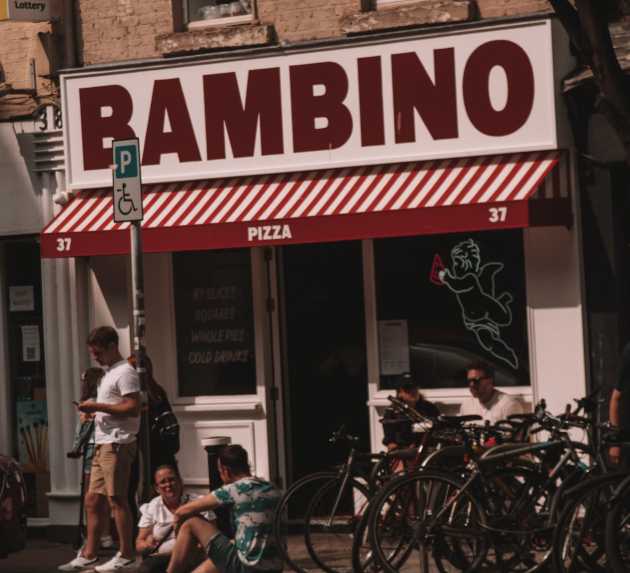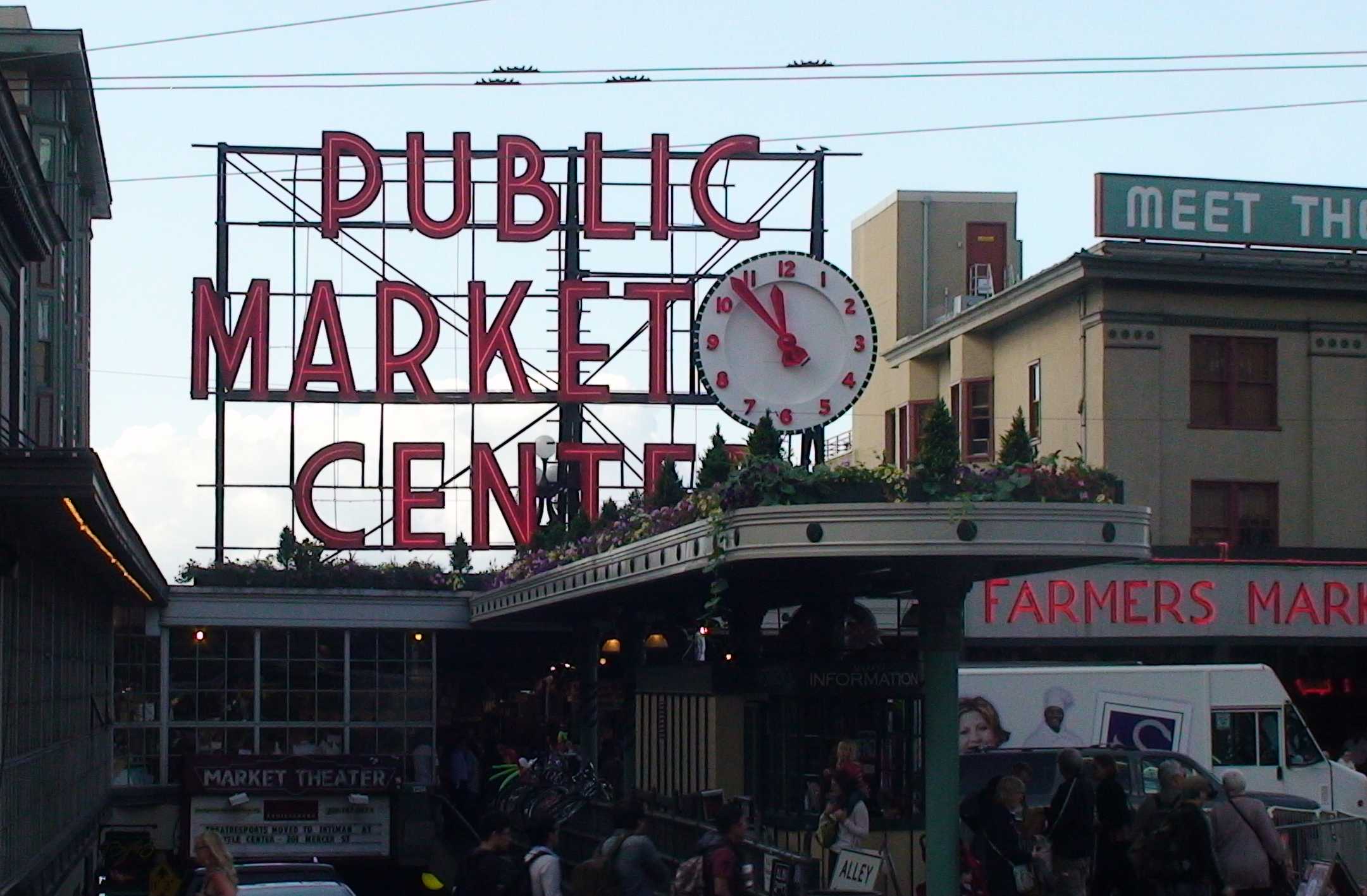All too often, I see my clients choosing a business location close to their home rather than considering all the criteria of a location that can make or break a business. I tell my clients that choosing the right location for their business is not just about finding a place to set up shop; it’s about creating a strategic asset that drives business sales.
The choice of location can have a significant impact on a business’s success, making it imperative to dive deeper into the ten essential areas when evaluating potential business locations. These include aligning the location with your brand’s style, understanding local demographics, assessing foot traffic, ensuring accessibility and parking, analyzing competition, benefiting from nearby businesses and services, considering the site’s image and history, complying with local ordinances, evaluating building infrastructure, and accounting for all operating costs. Let’s dive into each critical area when selecting a business location.
1. Style of Operation
Your business’s style and image are pivotal to its success. Ask yourself whether your operation will exude a formal and elegant ambiance or a more laid-back and casual vibe. Your chosen location should seamlessly align with your brand’s style, creating a harmonious atmosphere for your customers.
For example:
- A fine dining restaurant known for its upscale and sophisticated ambiance may choose to lease a space in a newly constructed luxury hotel or high-end shopping mall. The formal environment suits the elegant style they want to project.
- An eco-friendly retail store selling natural and organic products would likely pick a location like an open-air lifestyle marketplace or plaza with abundant natural light. The casual, outdoorsy setting fits their laid-back green image.
- A startup tech company aiming to feel approachable and youthful might rent an office near a college campus or in a redeveloped warehouse space with open work areas and bold colors. The energetic surroundings reflect their vision.
- A family-oriented pizza restaurant hoping to exude a warm, welcoming vibe could choose a spot in a neighborhood shopping center near schools and parks. The community setting matches their casual family focus.
- A high-end jeweler wanting an upscale and luxurious feel might lease a premium street-level space in an affluent urban area. The posh location suits their formal brand identity.
The key is identifying venues where the environment and ambiance align naturally with the image you want your brand to project. This creates consistency for customers and makes your business feel cohesive.
2. Demographics
Understanding the demographics of the area is essential. Who are your target customers, and how important is their proximity to your location? Additionally, assess the community’s economic stability to ensure it can provide a supportive environment for your business to thrive.
For example:
- A children’s tutoring center looking to serve dual-income families would aim to lease a space in a suburb with a high percentage of families, good schools, and a prosperous economy. Proximity to families is key.
- A cafe hoping to attract millennial customers may choose an emerging urban area with many new apartment buildings, as that demographic often drives the redevelopment of neighborhoods. Access to disposable income is important.
- A yoga studio seeking health-conscious clients might review median income, education levels, and fitness center density before picking a spot. Areas supportive of wellness activities would be ideal.
- An independent bookstore wanting a base of educated readers would likely consider college towns or metro suburbs known for art patronage. Compatible demographics are critical.
- A late-night restaurant catering to nightlife crowds would analyze foot traffic patterns and entertainment venues before committing to a location. Areas that are still lively after hours would be best.
The most suitable location reconciles proximity to your target customers and the existence of an economically vibrant area where your business can flourish. Analyzing key demographic and community factors helps minimize risk.
3. Foot Traffic
For retail businesses, foot traffic is the lifeblood of success. You’ll want to be in a visible and accessible location, but a quieter setting may be more suitable if your business requires confidentiality. Monitor foot traffic at various times to gauge its suitability for your specific needs.
For example:
- A gift shop or boutique would aim for high visibility, researching pedestrian volumes on weekends and in shopping districts, malls, or downtown areas. High constant traffic is ideal.
- A jewelry store or high-end fashion retailer may prioritize security over maximum foot traffic, so they may pick a premium indoor mall or a thriving mixed-use development for moderate but quality traffic.
- A yoga studio or wellness center would study multi-use trails and suburban plazas frequented by fitness-minded people rather than high-density downtown areas. Steady traffic that aligns with their customers is key.
- A specialty grocery store may analyze residential area foot patterns, focusing on mornings and weekends when nearby families run errands. Proximity to loyal neighbors can override raw traffic volume.
- A restaurant or cafe could observe daytime office crowd numbers and evening/weekend entertainment and tourist activity to gauge a mix of customer traffic types. Balance and timing are important.
The specific volume and characteristics of foot traffic needed for success depend greatly on the retail concept. Evaluating relevant patterns in potential locations ensures the surroundings best fit your business.
4. Accessibility and Parking
Evaluate how easy it is for customers, employees, and suppliers to access your facility. If you’re situated on a busy street, consider the ease of entry and exit from your parking lot. Ensure that the location caters to people with disabilities. Additionally, consider the efficiency of deliveries and how quickly your suppliers can transport materials to your business.
For example:
- A restaurant may examine the parking lot layout and nearby street access to ensure customers can easily enter/exit during busy meal times. Delivery access for frequent food/supply drop-offs is also key.
- A medical clinic would assess handicapped parking spaces, ramps, and automatic doors to accommodate patients with mobility limitations. Proximity to public transit could also be beneficial.
- A manufacturer would need loading docks and spaces for large trucks to easily maneuver. Room for material deliveries and finished product distribution is vital.
- A downtown retail shop could benefit from nearby street parking, visible signage, and storefront access for pedestrian shoppers. Americans with Disabilities Act (ADA) compliance is essential too.
- A child care center should be situated away from busy streets and intersections for child safety while still maintaining quick access for parent drop-offs and pickups.
Evaluating convenient access for all customer types, flexibility for deliveries/logistics, and ADA compliance ensures your location supports smooth operations and a positive customer experience.
5. Competition
Nearby competitors can either boost your business or make marketing more challenging. Consider the nature of the competition in your area and whether it complements your offerings or poses a threat to your success.
For example:
- A new pizzeria may benefit from being near other restaurants, as the area is established for dining. But too much pizza competition could require more marketing.
- A clothing store may avoid areas saturated with clothing boutiques, but the proximity of a few complementary retailers could help draw combined traffic.
- A dentist’s office will probably prefer to distance itself from other dental clinics to reduce competition for patients but being located close to medical services can reinforce the healthcare environment.
- A pet supplies store could gain a certain advantage by being close to big box competitors, which would draw more pet owners overall. But differentiation would be important.
- A frozen yogurt shop may want proximity to other quick-service restaurants and candy stores to capture similar impulse customer traffic. More food-related shops can help.
The ideal scenario is to be situated near competitors who don’t overlap too much with your niche. This way, you get added visibility without directly competing for the same customers. However, similar businesses can also cluster together for combined appeal, as in the case of food courts or auto plazas.
6. Proximity to Other Businesses and Services
The surrounding businesses and services can have a significant impact on your success. They can drive customer traffic to your establishment or make your work environment more convenient and appealing to employees. Ensure that there are essential amenities like restaurants, day-care centers, and other services in the vicinity.
For example:
- A corporate office may look for nearby restaurants, coffee shops, banks, gyms, etc., to provide convenience and amenities for employees during the workday. Easy access to services helps attract and retain staff.
- A mall clothing retailer would aim to be surrounded by complementary stores that drive combined shopping traffic, like home goods, beauty, fitness, and entertainment venues. More nearby options enhance the experience.
- A family medical practice may want to be located close to a pharmacy, laboratory, hospital, and childcare center to better cater to patients’ needs in the same area.
- An auto repair shop could benefit from proximity to parts suppliers, gas stations, quick service restaurants, and ATMs for customers’ one-stop convenience while their car is serviced.
- A specialty grocery may seek to be close to fitness studios, salons, and popular takeout restaurants, as health-conscious consumers often frequent those places too.
Being close to complementary businesses and useful services can add significant value by driving more customers and creating an all-encompassing environment. It’s about strategic convenience.
7. Image and History of the Site
Your location should reflect your brand image and have a history that aligns with your business goals. Investigate the site’s past and understand how it has evolved over the years. Be cautious when multiple businesses have previously failed at the location, as it may indicate underlying issues.
For example:
- A family-style restaurant may hesitate to lease a space with a history of short-lived nightclubs or bars, as this indicates that the environment is not conducive to creating a family brand.
- A children’s enrichment center would likely avoid a building previously home to failure-prone businesses like gambling facilities or adult entertainment, clashing with their brand values.
- An upscale salon may choose a location where longstanding high-end businesses, such as art galleries, have long been established, signaling that the area is amenable to high-end brands.
- A discount retailer may favor a high-traffic location where several big box stores failed, believing that their nimble business model can thrive where larger companies struggled.
- A funky cafe may opt to take over an old auto body shop with industrial architecture to match its edgy, retro vibe, leaning into the site’s history.
Analyzing a location’s past use and success/failure patterns provides insights into potential pitfalls or opportunities related to the space or surrounding area that have an impact on the businesses located there.
8. Ordinances
Don’t forget to check for any local ordinances or zoning restrictions that could affect your business operations. This extends to neighboring properties as well.
For example:
- A restaurant would want to ensure the zoning allows for food service operations, including proper venting requirements, parking allotments, and allowable hours of operation/deliveries.
- An auto repair shop needs to ensure that the zoning permits the noise level of its work and materials like car lifts and lubricants storage on-site. Nearby homes may restrict certain activities.
- A medical clinic wishes to avoid setting up next to businesses that emit chemical odors or noise pollution that could impact patient experience, hence the importance of checking adjacency allowances.
- A boutique fitness studio would not want to lease a space bordering a heavy industrial zone, as loud machinery could disrupt yoga classes. Noise limits should be harmonized.
- A childcare facility may be prohibited from opening if a liquor/tobacco store or marijuana dispensary is on the same block or nearby and will avoid renting spaces near businesses unsuitable for young children.
Looking at all zoning implications for your specific business operations and proximity to incompatible businesses ensures compliance and mitigates risks related to local ordinances.
9. Building Infrastructure
Ensure that your chosen business location has the necessary infrastructure to support your business’s high-tech needs. This includes electrical capacity, heating, ventilation, air conditioning, and telecommunications services. Enlisting an independent engineer to ensure that the building can meet your present and future requirements is often a good idea.
For example:
- A software company would want to ensure that the office space has ample power outlets and telecom wiring capacity to support computers, servers, phone systems, etc. Access to high-speed fiber Internet is also key.
- A restaurant must ensure that the facility’s electrical, gas lines, ventilation, and fire suppression equipment can handle extensive cooking equipment and appliances operating simultaneously.
- A clinic would require the building to have robust AC systems to maintain comfortable temperatures across waiting and exam rooms. Backup power capacity in case of outages is also critical.
- A retailer may ensure the facility has appropriate lighting, ceiling height, and strength to accommodate shelving units and inventory/storage needs. Having adequate heating capacity during the winter months is also important.
- A manufacturing operation would require industrial-zoned spaces with heavy power supplies, high ceilings, loading bays, reinforced floors, and ventilation systems to support machinery and assembly lines.
Having an engineer inspect key infrastructures like electricity, HVAC, telecoms, and construction ensures that the building aligns with your technical requirements, both at the time of opening and at scale over time.
10. Utilities and Other Costs
Beyond rent, other expenses associated with your location can substantially impact your budget. Investigate utility costs, janitorial services, insurance rates, and any additional fees such as parking costs. Make sure to account for these factors when making your final decision.
For example:
- A restaurant may look at the electricity costs to run extensive kitchen equipment, increased insurance rates for cooking facilities, and added parking/valet expenses during peak dining hours.
- A retailer would examine alarm and security fees for the store space, utility costs from display lighting and fixtures, and any common area maintenance charges from the landlord.
- An office-based company should account for janitorial and waste management fees, parking subsidies, public transit stipends for employees, and telecom and Wi-Fi expenses.
- A gym or fitness studio must budget higher electricity bills for a large number of televisions, HVAC demands, and insurance premiums for specialized equipment.
- Depending on location, a medical clinic might factor in medical waste disposal fees, delivery costs for specialty equipment, and liability/malpractice insurance.
Analyzing all the potential operating expenses tied to a location beyond just rent provides a comprehensive view of the real costs of running your business there. It also helps to find any hidden fees.
In summary, choosing the perfect location for your business is a multifaceted process that requires a systematic approach. This includes aligning the location with your brand’s style, understanding local demographics, assessing foot traffic, ensuring accessibility and parking, analyzing competition, benefiting from nearby businesses and services, considering the site’s image and history, complying with local ordinances, evaluating building infrastructure, and accounting for all operating costs. By thoroughly evaluating these ten critical criteria, you can make an informed and strategic choice that sets your business on the path to success. Remember, your business location is not just a physical address; it’s a vital component of your overall strategy and an asset that can minimize risk and maximize your business’s potential for success.
How will you use this information to select the perfect business location?
Related post: Why Your Location May Be Bad For Your Success












